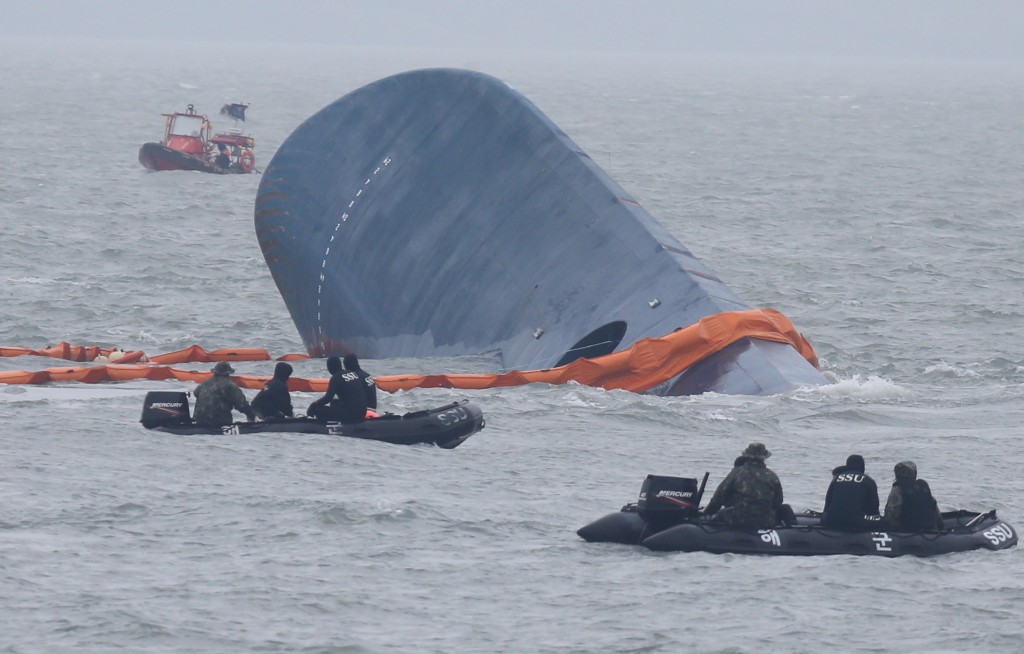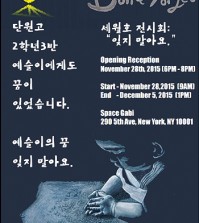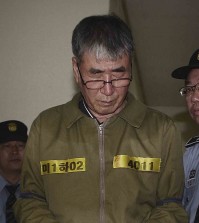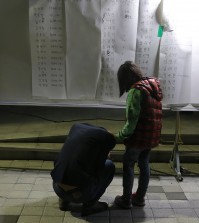- California Assembly OKs highest minimum wage in nation
- S. Korea unveils first graphic cigarette warnings
- US joins with South Korea, Japan in bid to deter North Korea
- LPGA golfer Chun In-gee finally back in action
- S. Korea won’t be top seed in final World Cup qualification round
- US men’s soccer misses 2nd straight Olympics
- US back on track in qualifying with 4-0 win over Guatemala
- High-intensity workout injuries spawn cottage industry
- CDC expands range of Zika mosquitoes into parts of Northeast
- Who knew? ‘The Walking Dead’ is helping families connect
Sharp turn, cargo shift emerge as cause of sinking

Rescue boats and ships from the Coast Guard approach the sunken ferry Sewol to search for passengers missing from the ship, Thursday. Rescue workers said the operation was hindered by bad weather conditions and high waves. (Yonhap)
By Nam Hyun-woo
A sudden shift of cargo in the ferry Sewol is emerging as the possible cause of it sinking, while several other theories have also arisen about why the huge boat capsized and sank at such a breathtaking pace.
A team of experts from the Coast Guard and National Forensic Service among others has begun an investigation, but the final cause is expected to only be determined after the ship is salvaged.
The Coast Guard has been questioning several crewmembers, including Captain Lee Joon-seok about whether the ship capsized while it was changing course.
It is dismissing the idea that the ferry hit a submerged rock as the cause of the accident.
The ship carried some 180 vehicle and 1,157 tons of cargo, including large containers. If the ship made a sudden turn, the cargo might have shifted causing it to list sharply.
The accident site, some 20 kilometers north of Byeongpoong Island off Jindo Island, South Jeolla Province, is known to be a point where many vessels turn onto a new course.
The Coast Guard suspects that the Sewol made a sharp turn here while changing course.
Survivors of the accident said the ship had stopped moving about an hour before it sent a distress signal at 8:58 a.m., Wednesday.
“The ship suddenly listed at around 7:40 a.m., while I was writing the work log. Windows were smashed and people were having difficulty standing,” a crewmember, surnamed Jeon, told Yonhap News Agency.
Other survivors agreed that the list was sudden and said they also heard a “thumping” noise.
The Coast Guard believes large containers may have made the noise when they hit the side of the hull. A sudden shift in cargo may have affected the ship’s steering mechanism.
Coastguards questioned the captain as a suspect — he could face manslaughter charges if his actions led to the sinking of the ferry.
However, the suspicions have been called into question by some experts.
“The Coast Guard’s claim is that the ship failed to handle a sudden turn because its cargo shifted. However, ships are designed to make turns within their capacity,” said Professor Yoon Jong-hee of the Korea Maritime and Oceans University. He is a member of the government’s investigation team.
Yoon stressed that it is premature to conclude that the Sewol sank because of such a shift.
The ship sank just two hours and 20 minutes after it stopped. According to survivors, the ship started to take on water just 20 minutes after the thumping sound.
If the ship listed without being holed, it would have taken longer for the ship to start being flooded.
Thus, many experts point out there should be a hole in the Sewol’s hull. Discovering whether this is the case and finding out if it was created from inside is key to finding the exact cause.
“The most urgent thing now is the rescue operation, and finding a hole in the hull is secondary. Since waters at the accident site have extremely poor visibility, it will take time to find out the exact cause,” said Yoon.















